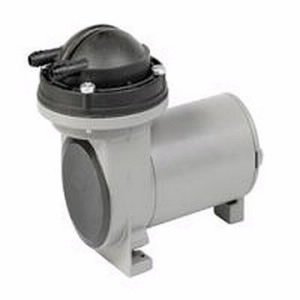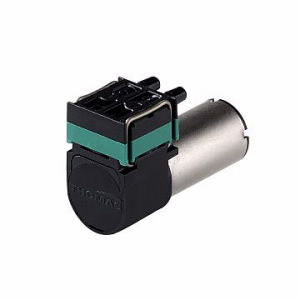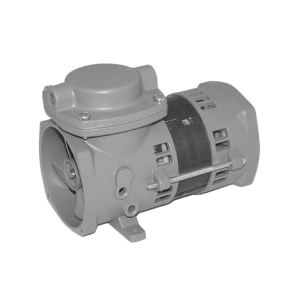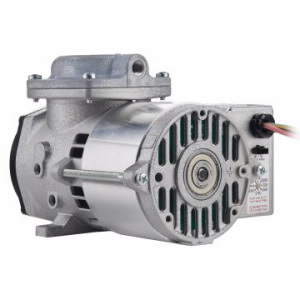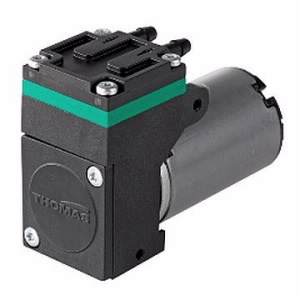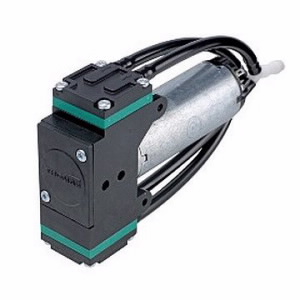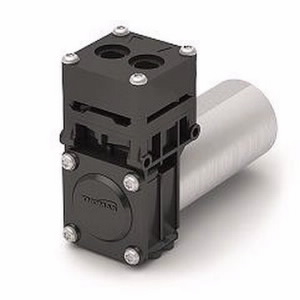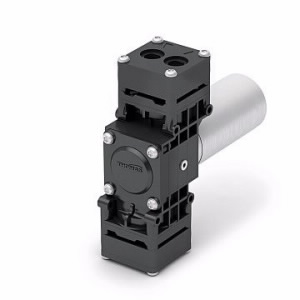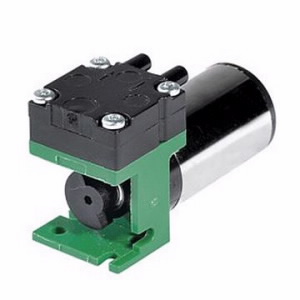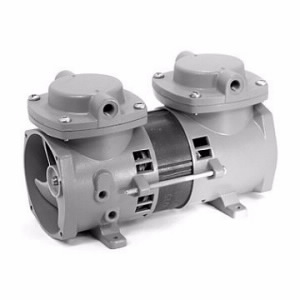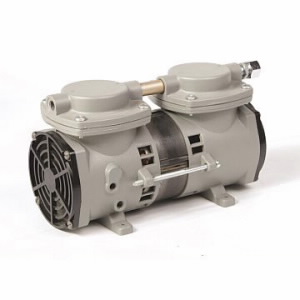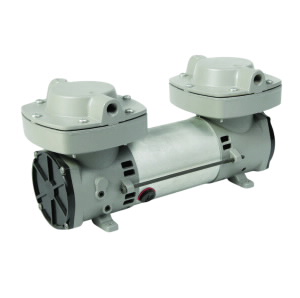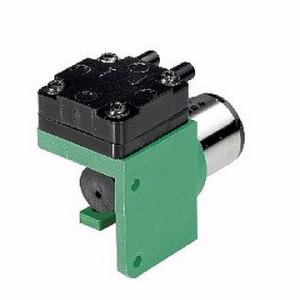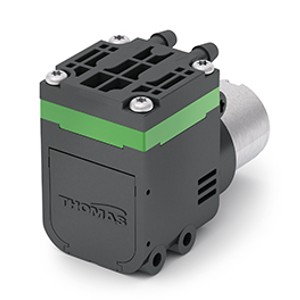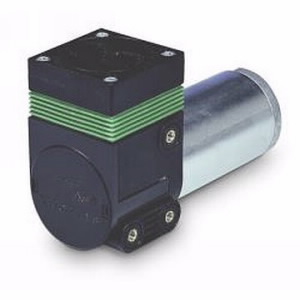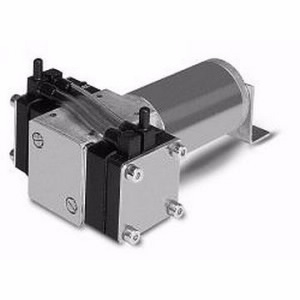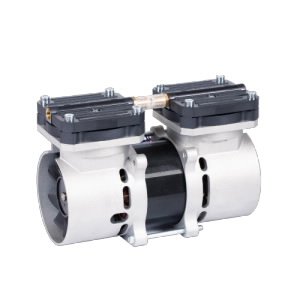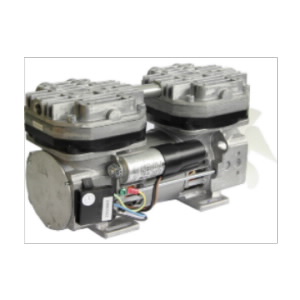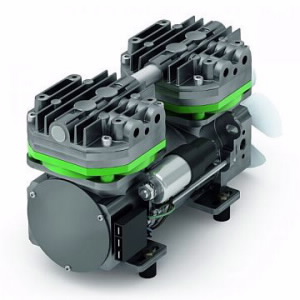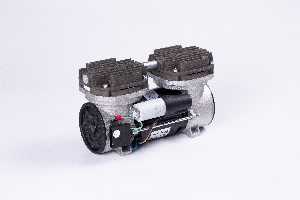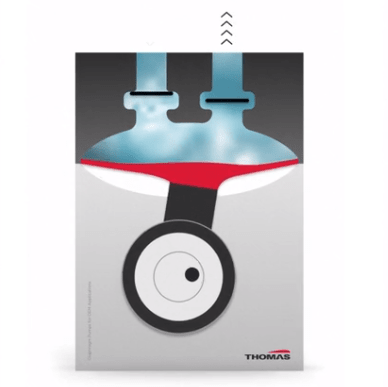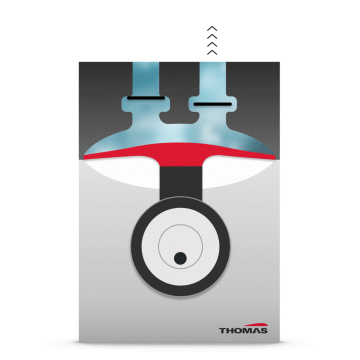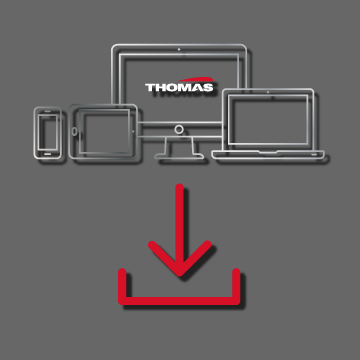Benefits of Thomas Diaphragm Technology
By design, Thomas gas diaphragm pumps provide significant benefits to the end-user:
- Low power consumption, resulting in significantly reduced energy costs.
- Low sound levels enhance workplace comfort and provide cleaner and more environmentally friendly performance.
- Maintenance-free operation for continuous work cycles.
Diaphragm Pumps and Compressors for Key Industries
Our gas diaphragm pumps are designed to consistently meet customer specifications and performance requirements. When transferring gas or achieving precise working conditions, our long-lasting diaphragm technology is highly efficient and reliable.
Thomas gas diaphragm pumps are the preferred choice for various applications, including medical devices, laboratory workstations, clinical diagnostics, gas detectors, and samplers. These pumps are especially vital for mission-critical and portable devices like gas analysis equipment, where precision and reliability are crucial for pumping fluids.
With extensive application knowledge and years of experience, our engineering teams can customize your pump to excel even in the most demanding conditions.
Customization of Thomas Gas Powered Diaphragm Pumps
The Thomas gas diaphragm pump’s wide portfolio offers a high degree of customization, allowing for extensive tailoring to accommodate the diverse and exacting needs of various industries while meeting rigorous application and project requirements. Depending on the specific model series chosen, you can seamlessly integrate an array of pump configurations, motor options, and elastomer materials.
This ensures a bespoke solution that precisely aligns with your unique operational demands.
- Free flow up to 90 l/min (3.2 cfm)
- Maximum pressure up to 3.0 bar (43.5 psi)
- Maximum vacuum up to 900 mbar abs. (26.6 in Hg)
- Single or dual head
- AC, DC or brushless DC
- EPDM, FKM, FFKM or PTFE
Discover how our highly customizable gas diaphragm pump platform can precisely meet your industry's specific needs. With various pump configurations, motor options, and elastomer materials available, we tailor solutions to your requirements. Get in touch with us for more information, and one of our experts will help you optimize your operations.
Contact us
What To Consider in Gas Diaphragm Pumps?
Regarding gas diaphragm pumps, several crucial factors should be taken into account:
1. Gas Compatibility: Ensure that the diaphragm pump you choose is compatible with the type of gas you intend to handle.
2. Flow Rate and Pressure Requirements: Determine the specific flow rate and pressure levels needed for your application. Select a pump that can deliver the required performance within these parameters.
3. Chemical Resistance: If the pumped gas is corrosive or reactive, consider the chemical resistance of the pump materials, which is essential to prevent damage to the pump and maintain its longevity.
4. Safety Features: Check if the pump has safety features such as pressure relief valves or overheat protection to prevent accidents and damage.
5. Noise and Vibration Levels: Consider the noise and vibration levels produced by the pump, especially if it will be used in a noise-sensitive environment.
6. Environmental Considerations: Assess whether the pump meets any environmental regulations or requirements, such as emissions standards or energy efficiency.
 Global (EN)
Global (EN)
